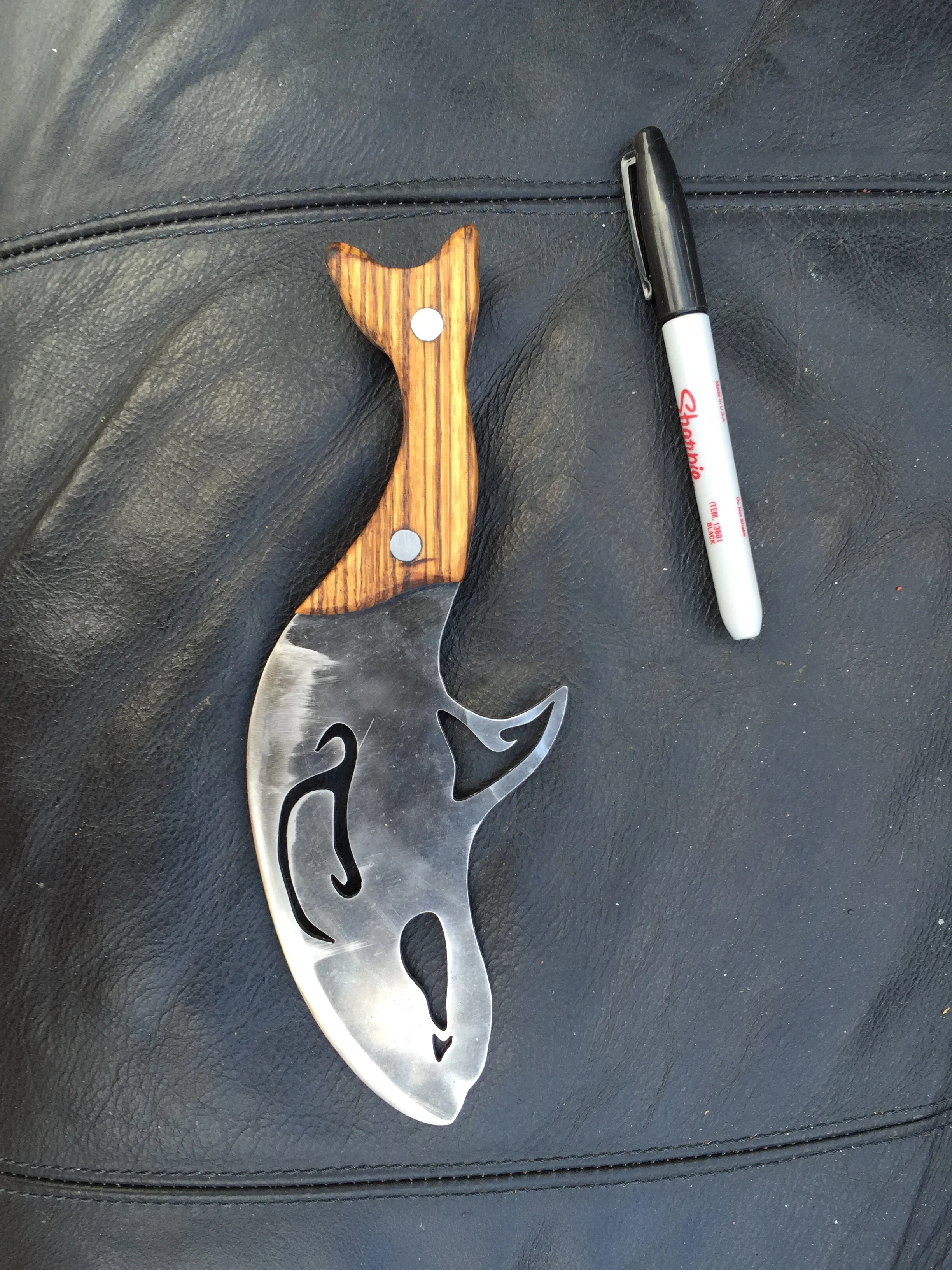Click Image Below To Scroll
Orca Knife
Made from a recycled Cold Saw blade, this orca knife was made as gift for my roommate's birthday. He has a long professed fear of Killer Whales and I thought this knife might help him get over his phobia in the form of immersion therapy. It was a fun project and I think Alex liked the end product.
Required Resources: 3 hours, $40
Size: 18" x 12" x 1.5"
Materials: Hardened Steel, Zebrawood, 2 part, Quick Cure Epoxy, Stainless Steel Pins.
Finish: Tung Oil
Tools: Band Saw, Planer Belt Sander, Orbital Sander, Water Jet
New Techniques:
Rinse, Recycle, Reuse: Otherlab was throwing out an old cold saw blade, so I rescued it from the garbage. Cold Saw blades can cut through aluminum, brass, and steel. Surely, this blade would make a knife good enough to chop vegetables at home! I water jet out the knife's profile, ground out the primary and secondary bevel and then washed the blade thoroughly (that blade sat in cooling fluid, lubricant and all other sorts of nasty chemical for 5 years. Best to be sure it was immaculate before using it on my food). While the final product wasn't even close to "production" quality, it was very sharp; I'll give it that.
Lessons Learned:
Hardened Steel is.... well.... Hard: This is not the typical process used to make a knife. Usually, you start with an untreated steel to make light work of all your shaping, tapering and material removal up until the secondary/ sharpening bevel stage. Then you heat treat the blade and afterward perform finishing touches to hone the edge. By using an old cold saw blade as the base material, we skipped straight to a hardened material before any material had been removed. Fortunately, the water jet is a beast and easily cut out the profile of the knife. Grinding the primary bevel, however, was a different story. With an unhardened steel, on a belt sander similar to the one we used, the primary bevel should take a couple minutes to pare down. With the hardened steel, it took nearly two hours. To make matters worse, the hardened steel wore the sanding belt smooth after a couple minutes. We had a stock pile of replacement belts, but it was quite time consuming to switch out the belt ever couple passes.
